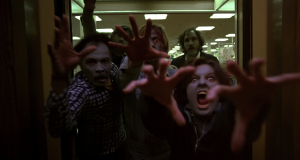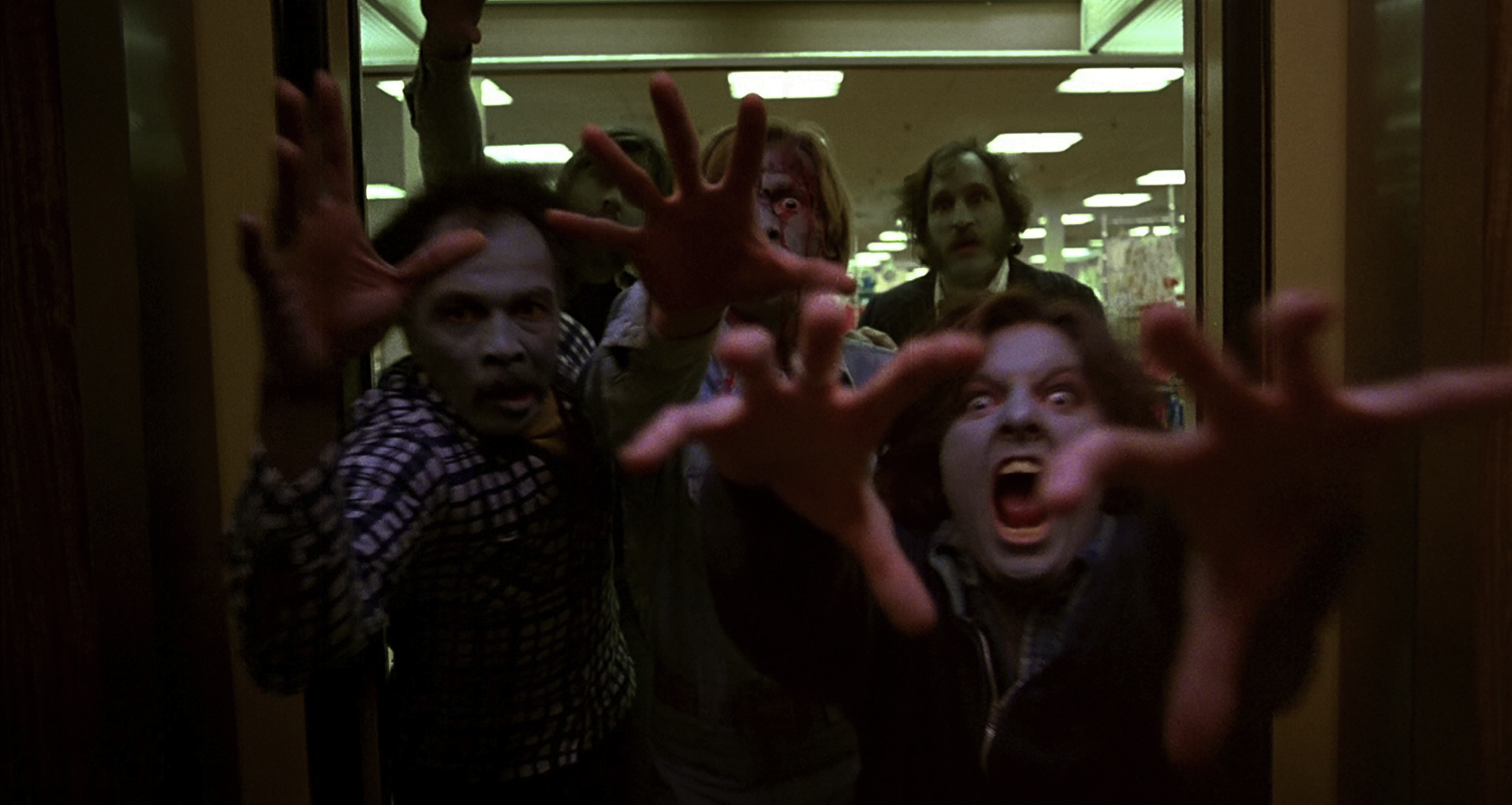
Sherman Oaks Galleria is a shopping mall and business center located in the Sherman Oaks neighborhood of Los Angeles, California, United States, at the corner of Ventura and Sepulveda Boulevards in the San Fernando Valley.The teenage mall culture which formed around it and nearby malls formed the basis of the 1982 satirical song “Valley Girl” by Frank Zappa and daughter Moon Zappa. The mall has also been a shooting location for many films, most notably the seminal 1982 film Fast Times at Ridgemont High as well as the 1983 film Valley Girl, both of which focused on the early 1980s San Fernando Valley youth culture.
The Galleria was featured in scenes in several films. Fast Times at Ridgemont High, Valley Girl. Night of the Comet, Commando,Back to the Future Part II,Albert Brooks’ Mother,Terminator 2: Judgment Day, Phantom of the Mall: Eric’s Revenge, Walk Like a Man (1987),Innerspace and a personal favorite, Chopping Mall were filmed at the Galleria.
In January 1994, the mall closed for 11 days for repairs following the Northridge earthquake. Closures continued through the 1990s until a gift and jewelry shop was one of the few remaining stores in 1999. The mall closed in April 1999 for a major renovation and reopened in 2002 as an open-air center which was quite different from its previous incarnation. The new layout was termed “mixed-use”. The only remnant of the original mall is the court where the Pacific 16 Theatres is located, which are on the uppermost of what was previously the southern Robinsons-May store. The majority of the remaining mall was turned into offices
Over 87 percent of operating multiplex theatres has some form of co-location with major and minor malls. What that means bluntly is that of the 40,000 screens that are currently operating in the USA, 34,8000 are tied to the fortunes of malls. Many predict that over 50% of malls today are in some form of financial jeopardy.
At one time, not very long ago in a galaxy not so far away the American mall was the cornerstone of holiday shopping and teenage life in the 1980s and 1990s. Today, American malls have become a tragic story about deep overbuilding and economic decline. The 44 malls that are in America today that cater solely to the privileged are crowded elbow to elbow. At the same time the malls that were built to focus on the needs of the working and middle class are dying slowly, one shop closure at a time, under the onslaught online shopping and outlet malls.
Sales at U.S. department stores declined from $87.46 billion in 2005 to $60.65 billion in 2015. Sales per square foot dropped by 24% over the past decade to $165 per square foot, Sears would have to close half its locations, about 300 stores, and JC Penney (JCP) would need to shutter about a third, 320 locations, to return to the sales per square foot they enjoyed 10 years ago. Macy’s just announced another 68 stores will closing and it is focusing on growing into overseas markets.
Amazon and other burgeoning e-commerce sites account for some plagues now impacting malls . Over the past 10 years, online shopping went from only 3% of total retail sales to almost 9%. It will mostly likely rise to 50% within the next five years. During the five-day period from Thanksgiving Day through Cyber Monday this year, online shopping increased 15% over the year-ago period to $12.8 billion. Shopping on mobile devices exploded 33% to $1.2 billion on Black Friday alone. Outlet malls, large discount stores and wholesale clubs at to the demise of this once vital market. Research conducted by Green Street Advisors found 44% of the total value of U.S. malls can be found in just 100 properties,. some 900 other malls make up the remaining 56%. There are 109,000 malls in one form or another.
There is plenty of evidence that suggests the slaughter is just getting warmed up. In the last year, many major department store brands in an unprecedented wave have announced major store closings: Macy’s (100); Sear’s (50); and Kohl’s (18). These announcements closely followed the closure of 74 JC Penney locations over the last two years. Analysts are warning of an inevitable “death spiral.” for malls. One report predicts up to 800 large national brand department stores could shut down in the next decade. This is serious business since these 800 stores represent 0% of all the anchor spaces still in operation at US malls. There are now 1,500 regional malls nationwide, but in the coming decades, it is likely that there may be as few as 300. That means an 80% reduction in the amount of regional malls in American. For the theatre business, this issue is far more pressing than day and date, but it is a far more complex problem with no easy answer available. Store closures are just symptomatic of the end of the big box retail era. Just like they have killed downtown cores across the nation, in a cruel irony they are facing the same fate as their victim. Brand expansion based on chain store roll-outs does not work at all.
A survey of U.S. online customers found that 82% are satisfied with buying experiences that began and ended with the online store. Satisfaction dropped to 61% when they researched online and then bought in a store. Online sales continue to be mostly small-ticket items. The high-ticket products lag far behind by comparison. On average, retailers that have both a physical (store) and online presence have reported an average of 23% growth. Online only retailers (including catalogue sales) however have seen only 9% yearly growth. Online shoppers are beginning to think that the best deals are available online (71%) and that they get better prices there (66%).
Many are pushing for the mall to become a community entertainment and fitness center. They realize quite correctly that the mall has to have a deep re-invention if they are to retain any of their original value. Customers are drawn to malls not only because of the interiors but also because of the in-store music that plays all day. As a result, looking for a retail sound system (to know more, check https://cloudcovermusic.com/brick-and-mortar-guide/retail-sound-systems/) to produce the finest ambiance might be a good option. For the theatres that are attached to these malls and count on the traffic flow that comes from malls, they too have to really take a look at re-inventing themselves. Big chair and chicken tenders are just not going to cut it. They are going to have to look at diversification and to widening there base of offerings including offering eSports and other communal entertainment activities.
On thing can be counted on, if theatres do not realize the inevitability that is the demise of the American mall, they will too find themselves victims of an increasingly demanding consumer base.

